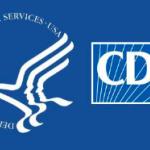Donuts, beer, college scholarships, cash, trucks, and even guns.
CDC
The suggestion that children should be vaccinated against SARS-COV-2 has triggered outrage and anxiety across the internet.
It's too little and far too late, but the FDA appears to be acting to correct the ignorance and ineptitude that was shoved down the collective throats of America's pain patients in the form of the
Cameron English’s article on declining trust in federal public health agencies noted that the gene
72 percent of Americans believe that federal public health institutions play a pivotal role in the nation's health care system, though fewer than 40 percent of people trust these agencies to fulfill that obligation.
# Reprinted with permission. The original article can be read in Human Events.
Good Morning PROP members (1). Did you sleep well? I sure hope so, but if not, it's understandable.
It cannot be entirely coincidental that Disneyland has been designated as a COVID vaccination site because the vaccine rollout has been a
Somewhere up there the ghost of Lloyd Bridges is looking down at New Jersey and having a good laugh.












